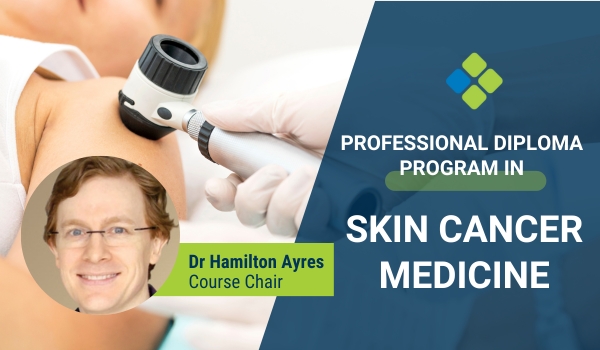When and how to use secondary intention healing under new MBS changes
Life by a Thousand Cuts podcast series | A/Prof Tony Dicker covers when and why to consider secondary intention healing under the new Medicare amendments.
.jpg)
HealthCert Education
With recent updates to the MBS now in effect as of 1 November 2025, GPs and skin cancer doctors will notice some important wording changes in the surgical operation item numbers, particularly those relating to excision and repair.
In this episode of Life by A Thousand Cuts, A/Prof Tony Dicker explains what these amendments mean in real terms, unpacking the subtle but significant implications for everyday skin cancer surgery.
Plus, download your Medicare Skin Cancer Item Number Guide below.
One of the most notable clarifications is the recognition that repairs are “included if performed”, meaning cases managed with healing by secondary intention are now explicitly covered.
Through a detailed case study of a basal cell carcinoma near the inner canthus, A/Prof Dicker walks through the full clinical workflow from excision margins and wound care to patient follow-up and histology, illustrating how secondary intention can achieve excellent outcomes in the right anatomical contexts.
He also shares practical dressing choices, patient management tips, and key considerations for concave sites such as the inner canthus and conchal bowl, where grafts or flaps may not always be necessary.
If you are managing skin cancers in primary care or surgical practice, this discussion offers valuable insight into how legislative nuance translates to patient care and procedural decision-making.
Listen to the podcast
Prefer a visual format? Watch this podcast on the HealthCert Education YouTube channel.
Helpful resources
Download your quick-reference Medicare Skin Cancer Item Number Guide, updated November 2025. ➡️ Download now >
Life by a Thousand Cuts
This podcast series is designed to help you enhance your clinical decision-making, procedural skills, and confidence in skin cancer management. Focus on real-world cases, surgical techniques and tips, journal article reviews, diagnostic and management insights, and guest interviews with GPs and specialists.
Listen to the previous episode: Can curettage alone be curative for skin cancer?
Next steps in your learning journey
🎓 Micro-Courses in Skin Cancer
Explore short, bite-sized CPD modules in focused topics in skin cancer. Complete in less than 10 hours from only $95.
➡️ Browse Micro-Courses >
🎓 Certificate Courses in Skin Cancer
Explore our university-assured, structured pathway to elevate your knowledge in the diagnosis and treatment of skin cancer.
➡️ Explore full program >
🎓 HealthCert 365 subscription
Prefer flexible learning across many topics? Access 4,000+ CPD hours on-demand with HealthCert 365 — anytime, any topic, one flat annual fee.
➡️ Discover HealthCert 365 >
Or explore more educational content in Skin Cancer Surgery.
 About A/Prof Tony Dicker
About A/Prof Tony Dicker
Associate Professor (Skin Cancer) & Course Coordinator MMed (Skin Cancer), The University of Queensland
Tony Dicker has practised full-time Skin Cancer Medicine in Melbourne since 2004, and previously practised in Brisbane. He obtained his PhD from The University of Queensland in molecular biology of skin cancer with Professor Ian Frazer's group at Princess Alexandra Hospital. He then spent three years as a dermatology registrar at the Royal Brisbane and Princess Alexandra Hospitals.
CPD self-submission
You can self-record CPD for this podcast. If you consume educational content on this blog, you can Quick Log CPD hours with the RACGP/ACRRM via the usual self-submission process. You will be asked to reflect on what you have learned, and you will require supporting evidence such as a screenshot. For more information, view the: RACGP CPD guide | ACRRM CPD guide

 1800 867 1390
1800 867 1390
.jpg)
.jpg)



